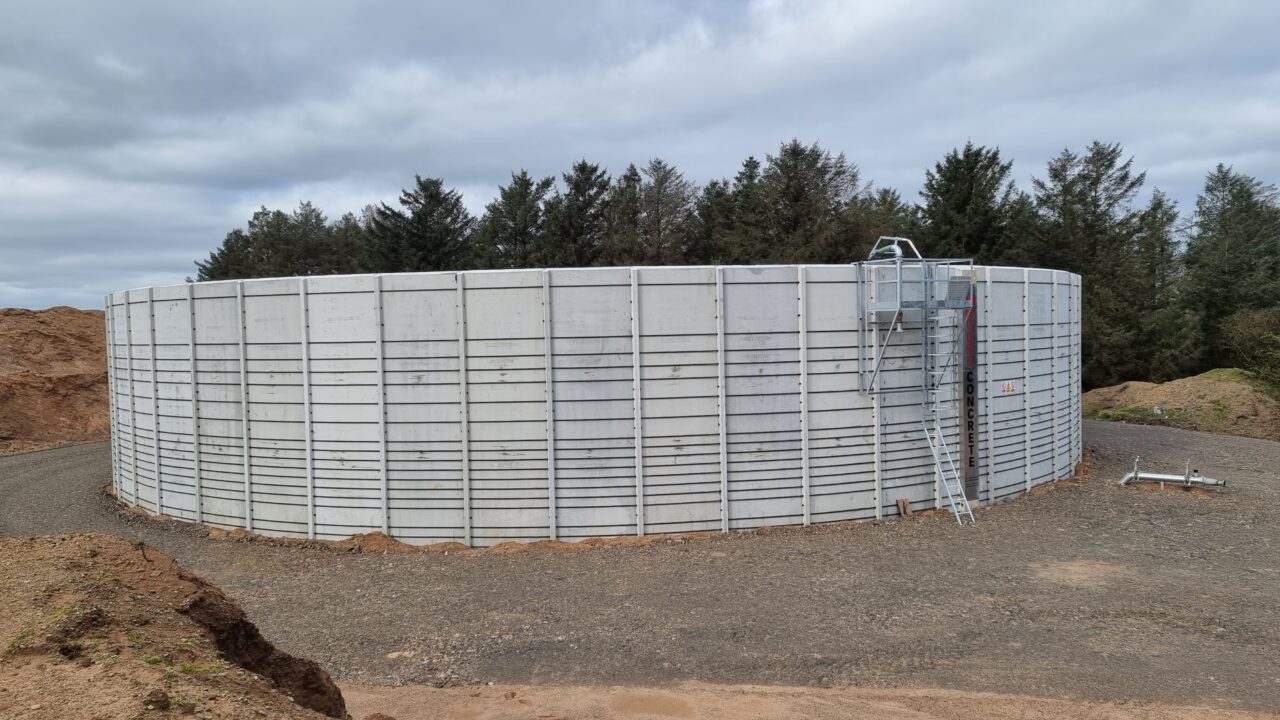According to the College of Agriculture, Food and Rural Enterprise (CAFRE) advisors in Northern Ireland, farmers can take a number of steps to reduce ammonia emission levels.
In the first instance, balancing protein intake to the requirement of the animal will minimise excess nitrogen being excreted.
A reduction of 1% crude protein content in ruminant diets can reduce ammonia emission levels by up to 15%.
From a housing perspective, low emission floor types are available that will help keep dung and urine separate. Slatted flooring designs are also available with slat flaps.
These inserts help minimise ammonia emissions from underground slurry tanks by reducing gaseous exchange between the tank and shed floor.
Modern floor design, using grooved flooring systems with toothed scrapers, can achieve 40–50% reduction in ammonia losses.
Peak ammonia emission rates from soiled floors occur between one and six hours after slurry and urine deposition. A regular scraping interval of between one and two hours can achieve ammonia reductions of up to 20%.
Reducing emissions
Covers on outdoor slurry stores can effectively reduce emissions. This is achieved by decreasing the surface area exposed to air movement, reducing emissions, according to CAFRE advisors.
Introducing protected fertiliser products, treated with nitrogen inhibitors, slows the loss of nitrogen to the atmosphere allowing more to be available for the growing crop.
So, e.g., protected urea, compared to conventional urea, can reduce ammonia emissions by up to 79%.
The traditional practice of spreading slurry with a splash plate can result in losses of up to 80% of the nitrogen content of the slurry to the atmosphere. However, low emission slurry spreading (LESS) reduces emissions by retaining more nitrogen in the slurry.
And, finally, urine – when excreted by grazing animals – does not normally mix with faeces, so the action of urease on urea in urine is minimised.
This results in lower ammonia emissions when livestock are at grass.
Staff at the Agri-Food and Biosciences Institute (AFBI) have calculated that a total confinement dairy system brings about an increase in ammonia emissions, per litre of milk, of over 30% compared to a more traditional pasture-based production system.
Likewise, committing to an extended grazing system would have a similarly positive impact on ammonia production levels.
Ammonia Strategy
The Department of Agriculture, Environment and Rural Affairs (DAERA) has launched a consultation on its draft Ammonia Strategy.
The draft strategy is the first of its kind in Northern Ireland. The department is seeking public participation and views.
Those interested in submitting their views on the consultation must do so before the closing date of Friday, March 3, 2023. This can be done through DAERA’s website.
Why is the Ammonia Strategy important?
There is concern that the public consultation could be used to bring about a reduction in livestock output in Northern Ireland.
Ammonia is not a greenhouse gas (GHG). However, it can and does wreak significant environmental havoc. Research carried out over many years has confirmed the problems created by ammonia, such as reduced water quality in rural areas.
Ammonia production levels are linked to the volumes of animal waste produced and the means by which these materials are subsequently spread on land. Nitrogen fertilisers are the other direct source of ammonia that is created within agriculture.
Northern Ireland is home to one of the most concentrated livestock populations in Europe. And significant quantities of nitrogen fertiliser are used.
However, nowadays, there are technologies available that can help farmers significantly reduce the levels of ammonia produced by, and escaping from, their businesses.
Chief among them is the use of protected urea. Irish research has already confirmed that using this source of fertiliser nitrogen significantly reduces the in-field production of ammonia.
There is also strong evidence to show that the use of low emission spreading technology systems will act to reduce the escape of ammonia to the atmosphere when putting slurry out onto land. These options include trailing shoe, shallow injection and trailing hose systems.
And finally, there is a growing recognition that certain aeration systems can work to reduce the levels of ammonia that escape from slurry stores. Another advantage of these techniques is the fact that no mechanical mixing of slurry is required at point of spreading.
The other obvious point to make in all of this is that escaping ammonia significantly reduces the fertiliser value of the slurries that are produced on farms. As a consequence, anything that can be done to reduce ammonia production levels makes strong economic sense.
